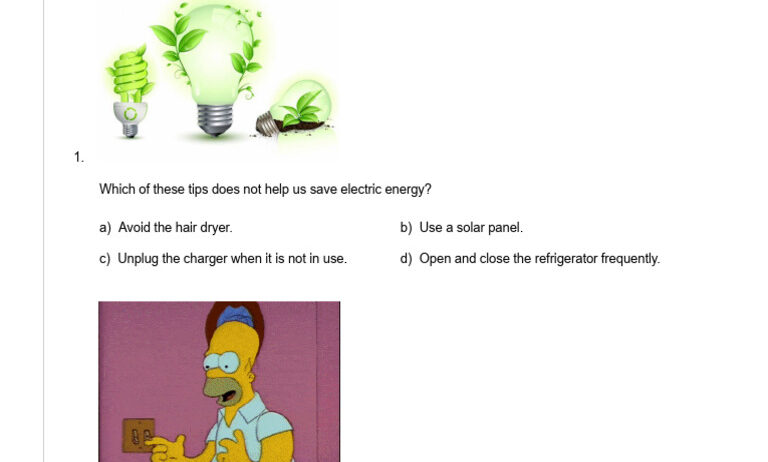In recent years, the urgency to address climate change has permeated every facet of our lives, particularly in educational institutions where the youth of today are preparing to be the stewards of tomorrow’s environment. Schools, as microcosms of society, have the potential to lead the way toward sustainable practices. One of the most tangible means of achieving this is through the conservation of electrical energy. With this in mind, here are some cogent strategies that can be implemented to cultivate a Green Campus.
1. Energy Audits: Assessing the Baseline
First and foremost, conducting an energy audit is vital for identifying areas of energy wastage. This thorough analysis includes examining lighting, heating, and cooling systems. By comprehensively understanding where electrical energy is escaping through the cracks, schools can more effectively deploy strategies to mitigate waste. Engaging students and faculty in this process fosters a culture of awareness and accountability.
2. Efficient Lighting Solutions
Transitioning to energy-efficient lighting options, such as LED bulbs, dramatically reduces electrical consumption. LEDs not only consume less energy but also possess a longer lifespan compared to traditional incandescent bulbs. Encouraging the installation of motion sensors in classrooms and hallways can further enhance efficiency. These sensors turn off lights when rooms are unoccupied, curtailing unnecessary energy expenditure.
3. Maximizing Natural Daylight
Utilizing natural daylight can drastically minimize reliance on artificial lighting. Schools should be designed or retrofitted with ample windows and skylights to accommodate this. Classroom layouts can also be optimized to take advantage of sunlight, reducing the need for electrical lighting during daytime hours. Teachers can incorporate lessons about the importance of sunlight into their curricula, thereby marrying practical energy conservation with educational content.
4. Smart Energy Management Systems
Implementing smart energy management systems in schools fosters optimal energy usage. These systems can regulate heating, ventilation, and air conditioning (HVAC) according to occupancy and external weather conditions. Furthermore, real-time monitoring allows for swift adjustments, promoting a responsive approach to energy consumption.
5. Behavior Modification and Education
Awareness plays a pivotal role in energy conservation. By organizing workshops and seminars focused on the importance of energy conservation, schools can instill a sense of responsibility among students. Promoting initiatives such as “Turn Off the Lights” campaigns encourages individuals to develop habits that contribute to a more sustainable environment. Behavioral nudges can significantly alter consumption patterns, leading to measurable reductions in energy use.
6. Energy-Efficient Equipment
Schools commonly utilize an array of electronic devices, from computers to projectors. It is imperative to select energy-efficient models that bear the ENERGY STAR label. Regular maintenance of equipment not only extends its life but also ensures that it operates at optimal efficiency. Incorporating practices such as shutting down computers and other appliances when not in use will further solidify energy-saving habits.
7. Renewable Energy Sources
Whenever feasible, schools should explore the incorporation of renewable energy sources, such as solar panels or wind turbines. These clean energy solutions can significantly diminish a school’s carbon footprint and serve as a living laboratory for students. By engaging in hands-on projects related to renewable energy, students become part of the solution to global energy challenges, cultivating a proactive mindset toward sustainability.
8. Collaborative Community Efforts
Sustainability initiatives can be amplified by involving the wider community. Schools can partner with local businesses, non-profits, and government agencies to champion energy conservation efforts. By organizing community events, such as clean-up days or energy awareness fairs, schools foster collaboration that extends beyond campus borders, ultimately challenging local residents to participate in conservation efforts.
9. Recycling and Waste Reduction
Though recycling primarily addresses material waste, it complements electrical energy conservation by minimizing the energy demands of production and transportation. Schools should implement robust recycling programs that educate students on the importance of reducing single-use items. Moreover, waste reduction initiatives, such as composting, further contribute to a lower overall environmental impact.
10. Evaluation and Feedback
Periodically evaluating the effectiveness of energy conservation initiatives is crucial. Schools should establish benchmarks and track progress over time. Solicit feedback from students and faculty to identify challenges and successes, enabling a continuous cycle of improvement. Celebrating successes, no matter how small, instills motivation and pride within the school community, encouraging further participation in energy-saving activities.
In closing, the responsibility of conserving electrical energy in schools is multifaceted and requires a concerted effort from all stakeholders. By fostering a culture of sustainability, educational institutions not only equip their students with essential knowledge but also pave the way toward a greener future. The implications extend far beyond the campus, showcasing that even small changes can engender transformative impacts for our planet and society. This collective journey toward a sustainable paradigm necessitates commitment, creativity, and collaboration, ultimately crafting environmentally conscious citizens ready to face the challenges of climate change.







